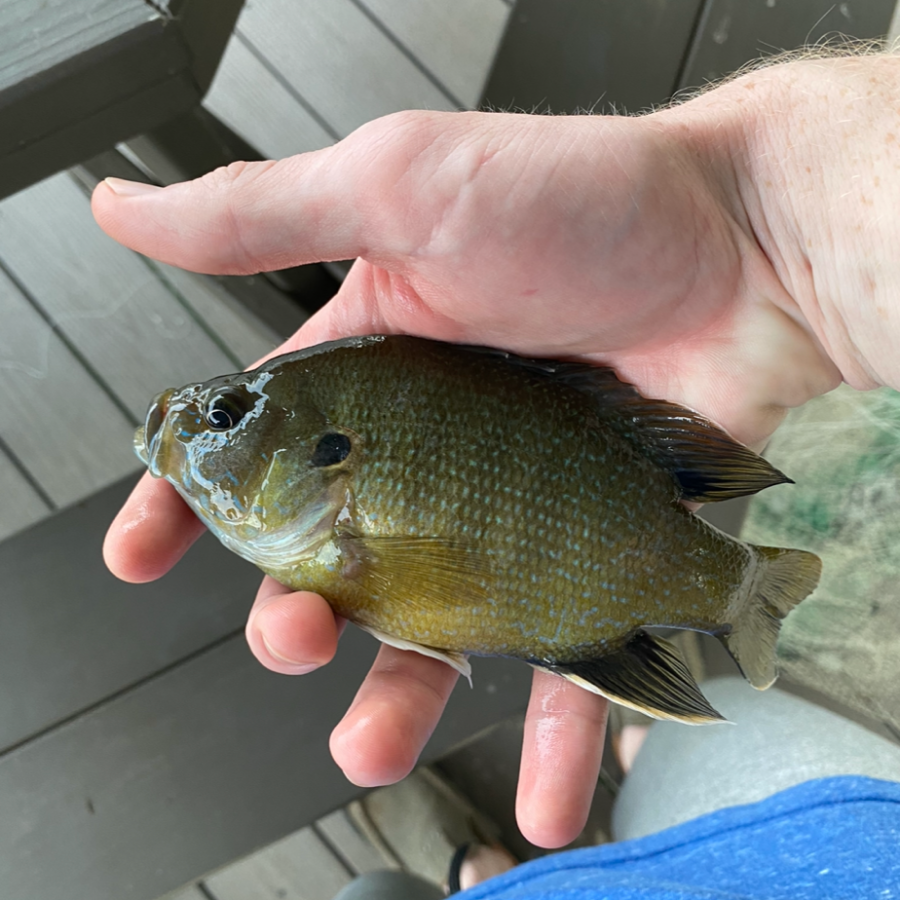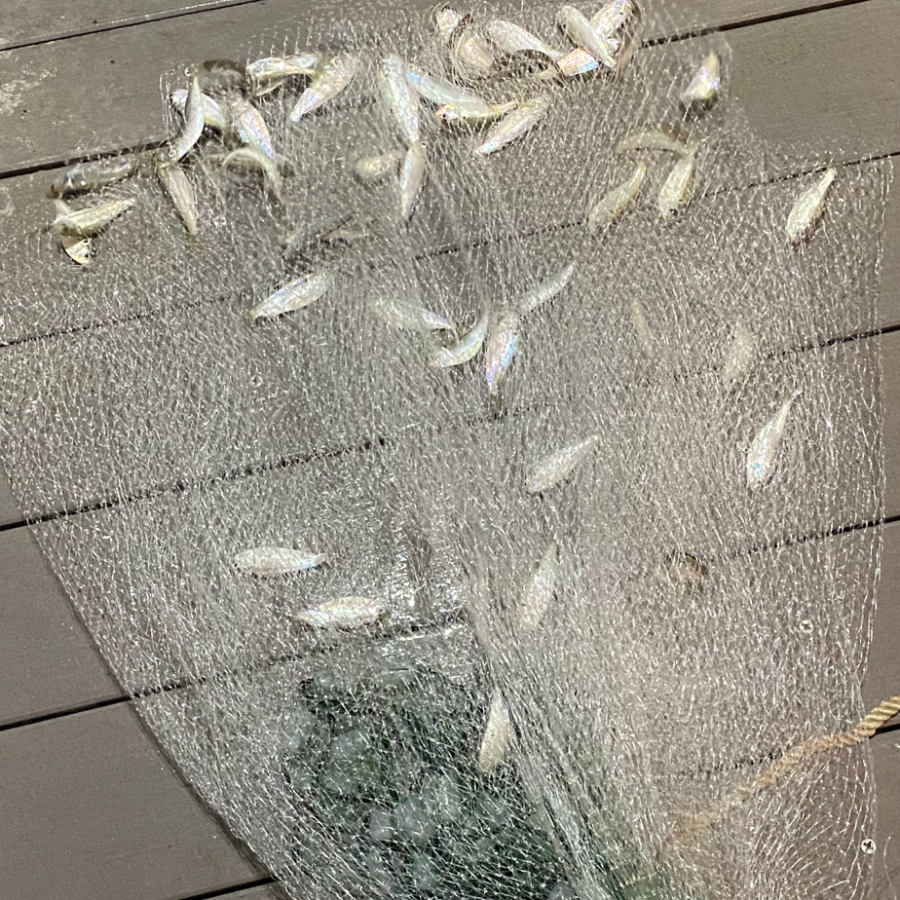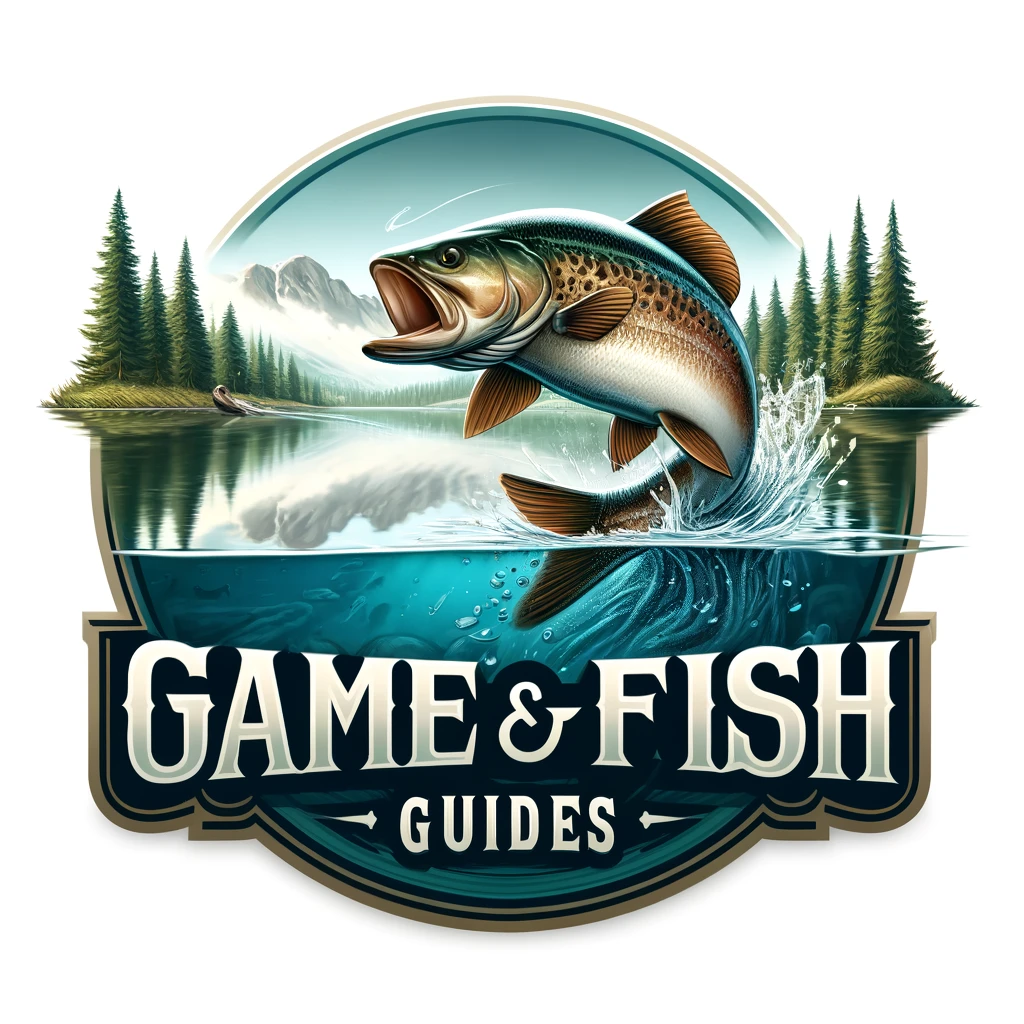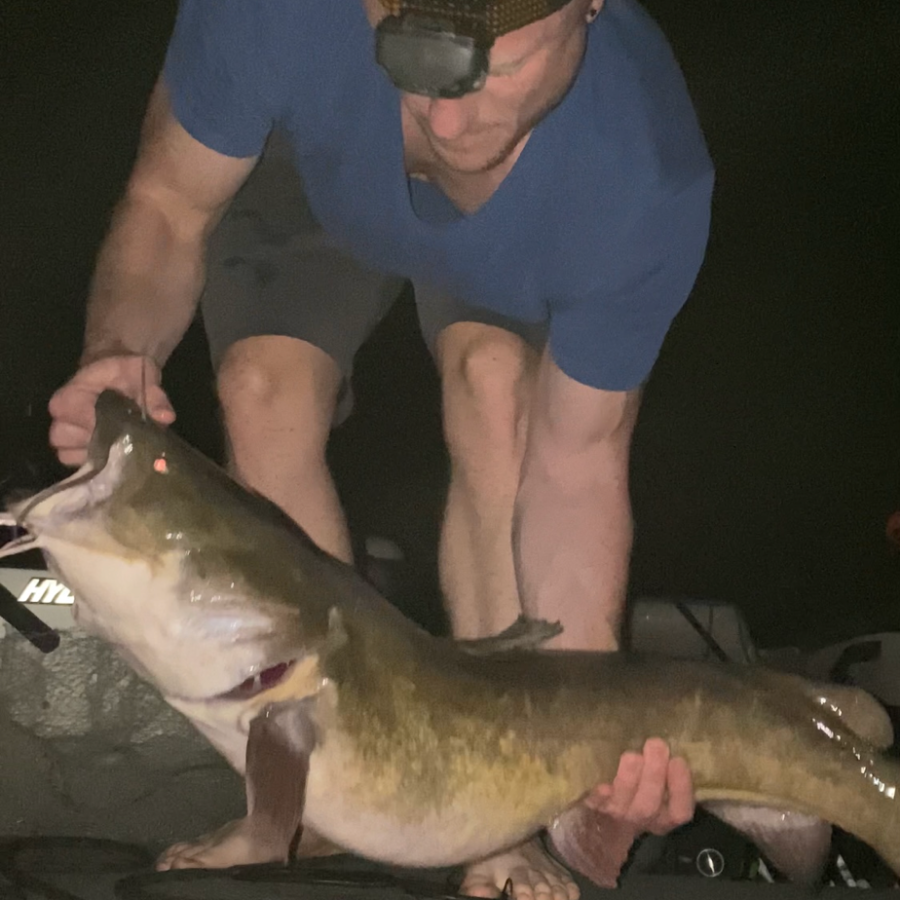Reservoir Flatheads are notably different to fish for than in rivers or ponds. Flathead Catfish fishing in reservoirs is more difficult for the simple fact being that it’s very unpredictable as to where they are. In rivers with a current, you can locate flatheads in places where they are protected from the current such as toppled trees, driftwood piles, bridge pilings, and other structures. But in the absence of current, flathead catfish will spread out into a variety of different places.
Additionally, many reservoirs have very deep water. In the reservoir I fish often, the water is about 70 feet deep on average. Typically, anglers are told to fish the shallow water directly near a deep hole. However, in a ravine-type habitat, this does not narrow it down. So how do you find the big flathead catfish?
Freshwater fishing locations
As we discussed before, without current, it can be difficult to locate a flathead in a reservoir. However, we will talk about the best spots to start looking at. While it’s true that fishing structure in a reservoir is a good option, it’s still not as reliable as structure would be in a river. When flatheads don’t have to fight against current, they tend to adapt to a wide variety of different habitats.
One thing to note is that when the water temperature drops at the end of fall, it’s usually not worth targeting flathead catfish until early spring. Early spring catfishing is by far the most productive to catch flathead catfish. In between this time, it’s much more productive to target blue catfish and channel catfish instead.
Fishing Up the Creek Arms
A good place to start looking for reservoir flatheads is up a creek arm that feeds into the main reservoir. Why? Because finding even a little bit of current can help you narrow down your search. In these areas, they will be a little more predictable.
I like to travel up a creek arm and fish submerged logs or trees. It doesn’t have to be trees either, it can be any sort of structure. If you drop an enticing bait into a flathead’s territory, it will not take very long to get a bite. I’ve had hits as soon as I dropped my bait in and put my rod in the holder. Drop your bait as close as you can to the structure without getting snagged. However, part of targeting flatheads means that you’re going to get snagged sometimes and it’s pretty normal if you’re putting your bait where you should be.
My strategy during the daytime involves only 15 minutes at each location and working my way up the creek arm. If you haven’t had a bite in 15 minutes at that piece of structure, there’s a good chance that you won’t, and in a large lake, it’s important to cover as much water as possible. So after that, try the next location.

Fishing the Points
Another method of targeting flatheads in lakes is fishing points, where a creek arm meets the main river channel, or two intersecting creek channels, depending on how large the body of water is. I prefer points with rocks or steep drop-offs versus bare subtle points.
With this method, I will anchor shallow, facing away from the bank, and cast lines in all directions in a fan pattern at different depths.
Night Fishing
My preferred method by far for big flatheads is to fish at night. At night flathead catfish will be more mobile and will be feeding in shallow waters. They will travel right along the shoreline in a few feet of water to feed. The beauty of this method is that they typically will come to you if, and only if, you are relatively close to their main territory.
When night fishing for flathead catfish, I typically fish in water less than 10 feet. The location will usually be a point or a shallow flat. However, contrary to the last section, I will fish the points up the creek that are more subtle in depth. I find that during the night, the baitfish will all congregate in these shallow waters.
This time, I will anchor farther out and point towards the shore. In a fan pattern, I will cast out my baits in front of and to the sides of my boat. With this method, waiting a bit longer can be beneficial because we are looking for Catfish that are on the move and feeding rather than trying to fish exactly where a catfish may be hiding.
Good Bait to Catch Flathead Catfish In Lakes

Have you ever heard someone say, “Use a big bait, catch big fish”? If by chance you have not, it’s pretty self-explanatory. When you use a big bait, you’ll have a better chance of catching a big catfish. Compared to other catfish species, live baits are critical for catching flathead catfish, especially if you’re fishing in a lake.
If you’re fishing a river, it will have a current that moves the bait making it look alive. Therefore, even cut bait will have some movement with it so it works just fine. However, in a stagnant lake, it will have no movement. Therefore, a lot of flatheads have zero interest in it.
Other than during the pre-spawn when the fish are feeding on everything they can find I don’t usually bother with cut bait if I’m targeting flatheads. If you are dead set on cut bait, I highly suggest freshly caught shad, using a throw net. Things like chicken livers, worms, etc just don’t do the trick. Yes, you might hook one with some luck, but they are not very dependable, especially in lakes.

Instead, live bait is the best choice—specifically live fish such as sunfish, carp, bullheads, goldfish, and suckers. I realize live bait is not exactly simple to get a hold of or use, but it’s truly a must in reservoirs and lakes. Carp makes great bait, but those aren’t exactly that easy to catch, especially at the size you want. Instead, I’m usually using bream like Sunfish. They’re just much easier to catch and they’re extremely hardy.
Hook your live bait right under the dorsal fin right before the tail fin. This way, your bait can still move around freely and naturally.
Tackle Selection
When Catfishing, especially for reservoir flathead, I usually go with a medium-heavy baitcasting rod lined with 30-pound Berkley Big Game. You can also use a 50-60 pound braid if you prefer a braided line.
Lastly, the rig of choice is either a Carolina Rig or a Santee Cooper Rig. Carolina rig if you’re fishing with live bait, and Santee Cooper if you’re using cut bait. The reason is that you don’t need a float if you have a live fish on there.
I use a size 6-10 circle hook or Kahle hook depending on the bait size. For weights, I use 2-10 oz egg sinkers depending on the size of the bait. You can use flat or pyramid sinkers too if you prefer that. It’s best to use the least amount of weight you need so you don’t have unnecessary resistance.
Summing Up Reservoir Flatheads
Catching reservoir flatheads comes down to patience, adaptability, and strategy. Unlike rivers with current where structure determines flathead locations, reservoirs have almost no current, varying depths, and less predictable habitats. Anglers should target creek arms with some kind of current, fish structured points, and take advantage of night fishing. Bait choice and rigging are important. Live baits like sunfish or carp, presented naturally, make a big difference.

